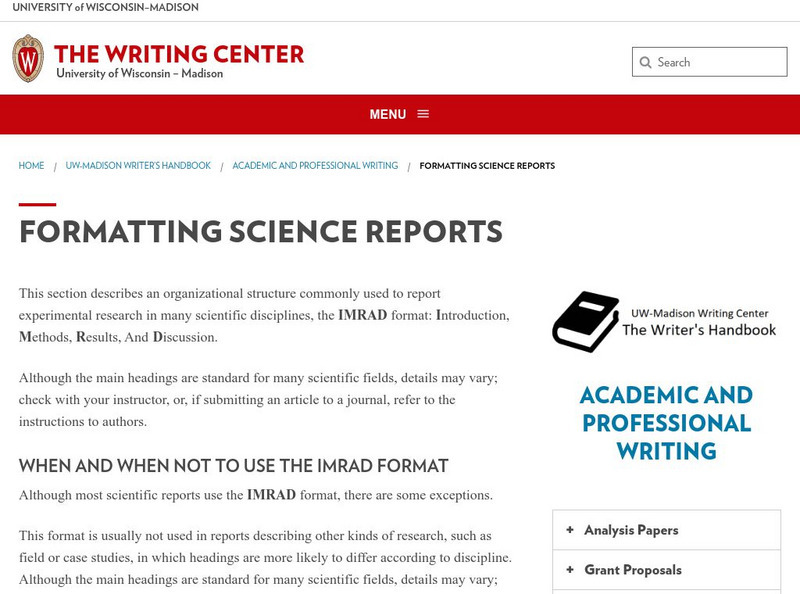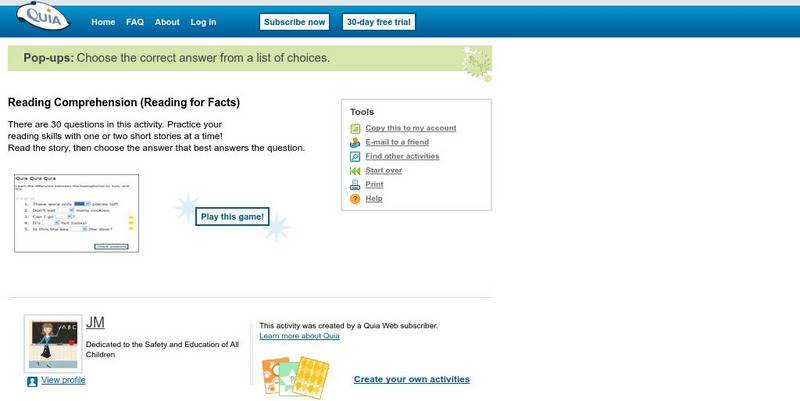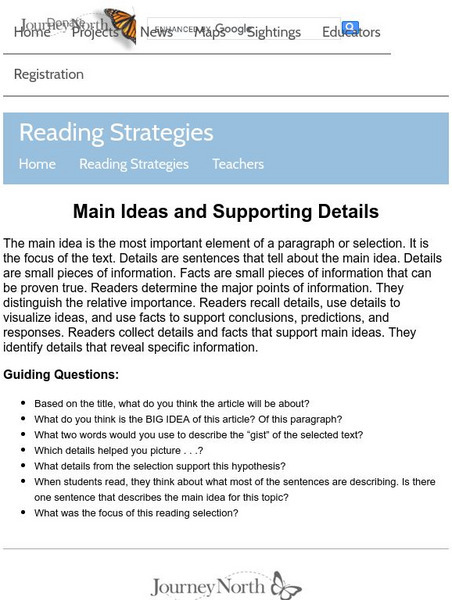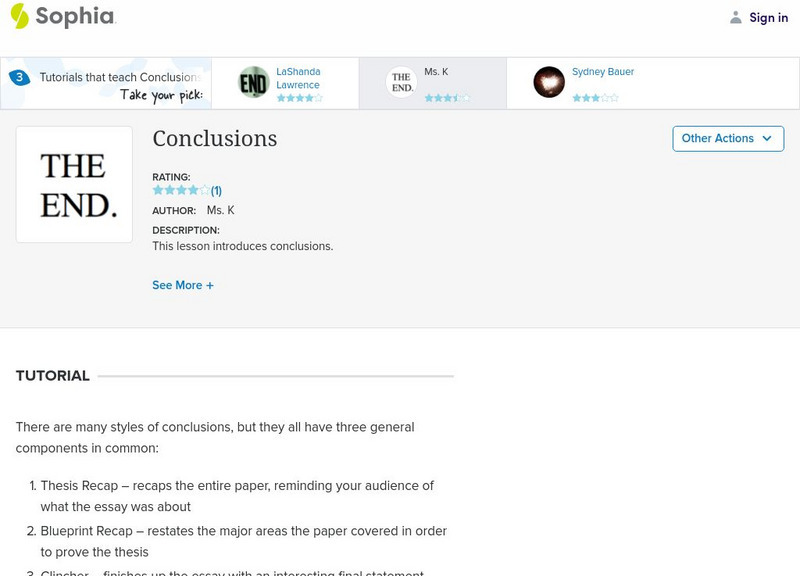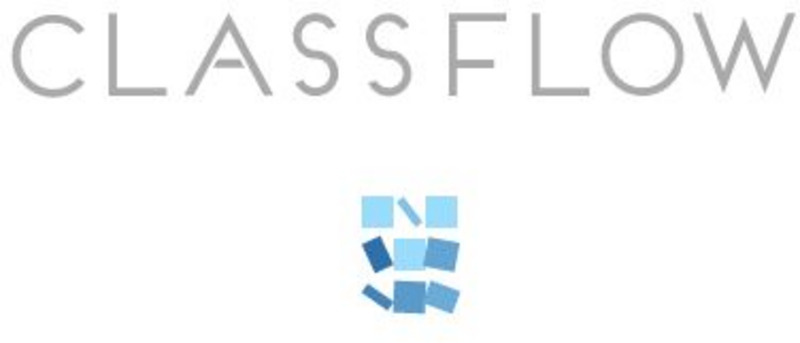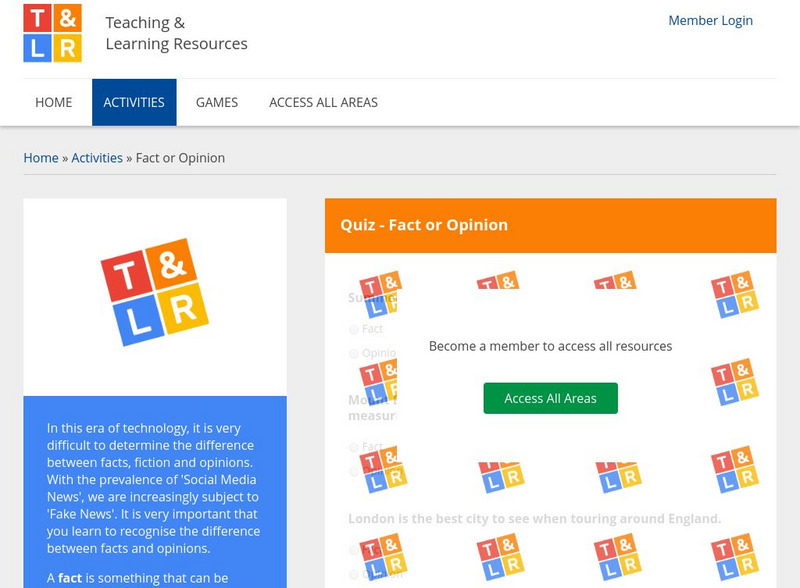CommonLit
Common Lit: Woolly Mammoth Sparks Debate Over Cloning
CommonLit.org is a wonderful resource to use in a Language Arts classroom. Each story or article is accompanied by guided reading questions, assessment questions, and discussion questions. In addition, students can click on words to see...
Sam Houston State University
Texas Center for Academic Excellence: Summarizing Pre Test
Check students' prior knowledge and understanding of how to summarize passages and identify main ideas.
Curated OER
Mc Graw Hill: Informational Text: Determine Central Ideas and Supporting Details
Read a short informational text and determine the main idea and supporting details. Click to check your answers then click on Practice.
Texas Education Agency
Texas Gateway: Synthesize Ideas in Informational/expository Text
[Accessible by TX Educators. Free Registration/Login Required] In this lesson, you will expand on your ability to read texts, synthesize them, and make choices based on the information you read. Finally, you will learn how to use textual...
Texas Education Agency
Texas Gateway: Make Inferences in Informational/expository Text
[Accessible by TX Educators. Free Registration/Login Required] In this lesson, you will be taking a look at how authors of informational texts, such as expository texts, organize their writing and the effects that organization can have...
University of Wisconsin
University of Wisconsin: Writing Center: Formatting Science Reports
This site outlines the necessary elements of a scientific report. The site is broken down into the follow segments: title, abstract, introduction, methods, results, and discussion. Within each section is a contents section as well as a...
BBC
Bbc Skillswise: Fact or Opinion
As part of the BBC's Skillswise unit, this resource covers the basics of separating fact from opinion through a worksheet, a factsheet, and a quiz.
Other
Dade Schools: John Ferguson: Informational Text Features
A table explaining different text features including graphics, visuals, and sections found in text.
E Reading Worksheets
E Reading Worksheets: Main Idea: Test 1
In this reading test focusing on the main idea, students read passages and answer questions concerning the main idea.
Other
Keys to Literacy: How to Write a Summary
Learn the seven steps to writing a summary of an informational text. Includes a summary template and completed examples.
Quia
Quia: Reading for Facts
This interactive quiz assesses students' reading comprehension skills of informational text passages. Students will read 30 short passages and answer question about a detail for each.
Annenberg Foundation
Annenberg Learner: Journey North: Reading Strategies: Main Ideas and Supporting Details
Learn how to identify the main ideas and supporting details in an informational text by using a list of guiding questions.
Annenberg Foundation
Annenberg Learner: Journey North: Reading Strategies: Make Inferences and Draw Conclusions
Learn how to go beyond the literal meaning of a text by using a list of guiding questions to make inferences and draw conclusions.
Annenberg Foundation
Annenberg Learner: Journey North: Reading Strategies: Summarize Information
Learn what a summary is and how to write an objective summary of an informational text by using a list of guiding questions.
Quia
Quia: Reading Detective Drawing Conclusions 7
Read a short text and then choose the correct inference or conclusion in this four question quiz.
Quia
Quia: Making Inferences, Summaries, and Conclusions
Read a short text and then choose the correct inference, summary, or conclusion in this Rags to Riches style game.
SMART Technologies
Smart: Making Inferences
Inferencing is finding clues and using background knowledge to determine an explanation from facts in a passage or story. It's "reading between the lines" of a story to understand what the author doesn't state.
Sophia Learning
Sophia: Conclusions: Lesson 3
This lesson introduces conclusions. It is 3 of 5 in the series titled "Conclusions."
ClassFlow
Class Flow: Fact and Opinion
[Free Registration/Login Required] Designed for grade 6, this flipchart covers the differences between fact and opinion. Students will analyze statements to determine if they are a fact or if they are an opinion.
ClassFlow
Class Flow: Fact or Opinion
[Free Registration/Login Required] This flipchart reviews the definitions of fact and opinion and gives the students opportunities to sort and identify fact and opinion statements.
ClassFlow
Class Flow: Fact or Opinion
[Free Registration/Login Required] Students will be introduced to the difference between facts and opinions. They will practice determining which statements are facts and which are opinions. Activities include sorting and classifying...
Other
Teaching and Learning Resources for Ks2 (Ages 7 12):literacy: Fact or Opinion?
This is a 10 question, self-scoring quiz on separating fact from opinion. Students read a sentence and select "fact" or "opinion" from the drop-down menu.
Other
Cuesta College: Interpreting What You Read
This site from Cuesta College provides both in-depth definitions of fact and opinion, and several clear examples of each.
Quizlet
Quizlet: Making Inferences (Nonfiction)
Build your nonfiction inference vocabulary by interacting with terms like lesson, data, schema, sources, and more. Choose to view flashcards, complete learning and spelling exercises, take a test, or play a matching or gravity game.






